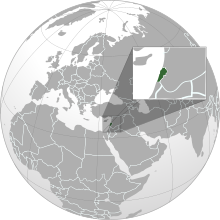CIA activities in Lebanon

CIA activities in Lebanon refers to confirmed and alleged activities carried out in Lebanon by the Central Intelligence Agency (CIA).
Cold War
[edit]1957 election
[edit]William Blum has claimed that the CIA financed the campaign of Camille Chamoun during the 1957 election.[1]
Hiwar magazine
[edit]From 1962 to 1967, the CIA funded the Arabic magazine Hiwar under the cover of the Congress for Cultural Freedom.[2] Generous funding was provided by the CIA with the stipulation that it publish articles on the situation of Soviet Muslims.[3]
Lebanese civil war
[edit]Tim Weiner has claimed that Christian leader Bashir Gemayel was the "CIA's most highly placed source in Lebanon" and that the CIA "had another national leader on their payroll".[4] The 1983 US embassy bombing in Beirut killed several 8 CIA agents and in 2023 the CIA called it the "deadliest day in CIA history".[5] The role of the CIA in the 1985 Beirut car bombings has been debated, with Bob Woodward claiming the attack was funded by the CIA and Saudi Arabia.[6] Ronald Reagan. Robert McFarlane, and William Casey's widow claimed that the CIA had no involvement.[6][7] In the aftermath of the bombing, US officials cancelled its Beirut based counterterrorism operation, that trained Lebenese counterterrorism units, because of indirect links between the CIA and the bombing.[8]
21st century
[edit]In December 2011, Hezbollah chief Hassan Nasrallah released the names of 10 undercover CIA agents working in Lebanon during a televised address on al-Manar, claiming CIA agents conducted meetings at Pizza Hut and Starbucks franchises.[9] Nasrallah claimed the agents were using diplomatic cover.[10]
See also
[edit]References
[edit]- ^ Blum, William (2002). Rogue State: A Guide to the World's Only Superpower (2nd ed.). South Africa: Spearhead. p. 171.
- ^ Elizabeth M. Holt (2013). "'Bread or Freedom': The Congress for Cultural Freedom, the CIA, and the Arabic Literary Journal Ḥiwār (1962-67)" (PDF). Journal of Arabic Literature. 44: 83–102. doi:10.1163/1570064x-12341257. Archived from the original on 23 October 2021.
- ^ Joseph Massad (2015). Islam in liberalism. Chicago; London: University of Chicago Press. p. 83. ISBN 978-0-226-20622-6. OCLC 871670666.
- ^ Weiner, Tim (2007). Legacy of Ashes: The History of the CIA. New York: Doubleday Broadway Publishing Group. pp. 389–390.
- ^ "Never Forgotten: The Deadliest Day in CIA History - CIA". www.cia.gov. Retrieved 2024-10-02.
- ^ a b Zoglin, Richard (12 October 1987). "Did a Dead Man Tell No Tales?". Time. Retrieved 29 March 2011.
- ^ "Terrorist Attacks on Americans, 1979–1988". PBS. n.d. Retrieved 23 January 2007.
- ^ "C.I.A. Linked to Beirut Bomb". The New York Times. Associated Press. 12 May 1985. Retrieved 8 January 2021.
- ^ Press, Associated (2011-12-13). "Hezbollah names CIA spies in Lebanon". The Guardian. ISSN 0261-3077. Retrieved 2024-10-02.
- ^ "Hezbollah names 'CIA spies with informers at Starbucks'". BBC News. 2011-12-13. Retrieved 2024-10-02.
